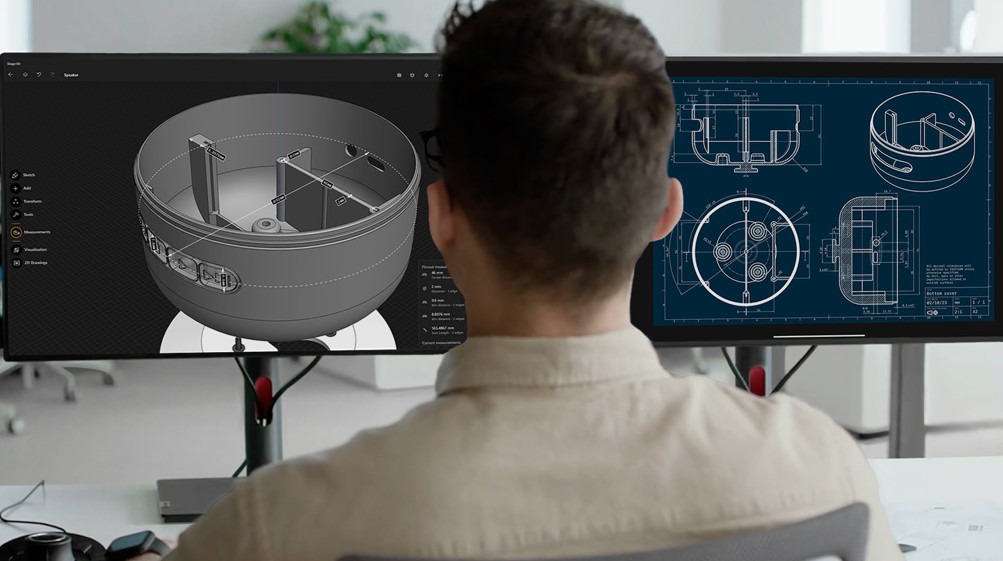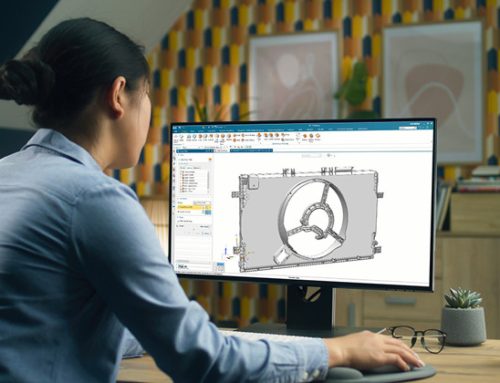Product design and development must be absolutely efficient in today’s competitive manufacturing scene. Models of computer-aided design (CAD) act as a guide for turning abstract concepts into physical objects. Still, the first ideas may call for changes to fit customer expectations and pragmatic production reality. Optimizing CAD models, checking rapid prototype, guaranteeing product quality, and improving general design efficiency all depend on properly accessing and analyzing comments from many stakeholders. This helps to save costs. This thorough investigation explores the ways to get comments, properly understand them, and apply improvements to maximize CAD models for improved manufacturing results.

Importance of Feedback in Manufacturing
In manufacturing, feedback is a basic element that greatly affects the design and production process. Design teams, production workers, quality control specialists, and consumers are just a few of the many places it may come from. Every source offers special ideas that help to improve CAD models.
Design teams mostly concentrate on the usefulness and looks of a product. Their comments may point out areas where the design could be strengthened for increased visual appeal and user experience. They could advise changes to a handheld tool’s ergonomic design, for example, to improve comfort during use.
On the other side, manufacturing teams provide comments centered on the design’s practicalities. Their observations can highlight elements of the CAD model that could impede manufacturing procedures, therefore addressing issues of manufacture and assembly. They could find, for instance, hard-to-assembly components or materials that are tough to get, which calls for design changes.
Performance evaluation of the product and industry standard compliance depend much on quality control. Their comments enable the design faults that can cause product failures to be found, therefore guaranteeing that the result satisfies safety and quality criteria. They could see, for example, that certain CAD model tolerances fall short of the required criteria, which calls for a redesign.
Customer comments are just as crucial as they help one understand the end-user experience. Knowing what consumers value or find objectionable about a product can help guide the next design projects. User comments, for instance, might expose that the interface of a product is not user-friendly, which calls for improvements in usability.
Manufacturers may have a thorough awareness of the design’s strengths and shortcomings by weighing comments from these many sources. This all-encompassing method of evaluation guarantees that the result not only exceeds consumer expectations but also conforms to production capacity.
Methods to Access Feedback
Manufacturers may use many techniques catered to their particular needs to compile comments properly. These techniques include questionnaires and surveys, interviews and focus groups, prototyping and testing, simulation programs, and version control systems.
Practical instruments for gathering organized comments from stakeholders include surveys and questionnaires. They may be made to target certain areas of the design, therefore enabling stakeholders to provide qualitative feedback and numerical evaluations. A survey may ask consumers, for instance, to score their level of satisfaction with certain product characteristics and provide an opportunity for open-ended comments.
Focus groups and interviews provide team members and stakeholders with more in-depth conversations. These techniques let one investigate complex input that polls may not be able to record. For example, a focus group of design engineers might go over the difficulties they have with the present CAD model, therefore exposing ideas for possible design enhancements.
Two very important ways to get real-time comments are prototyping and testing. Teams may evaluate general design, ergonomics, and functioning by building physical prototypes grounded on CAD models. Testing these prototypes with real-world consumers offers priceless information that may guide major design improvements. Testing a new tool with end users, for example, might expose useful problems that are not apparent from a digital model.
Another way to get comments is via simulation programs. Advanced CAD technologies let teams forecast possible problems before actual manufacturing by simulating the performance of designs under several scenarios. Early design faults found by this proactive technique help to save time and money.
Managing changes in CAD models and linking them with feedback obtained at many phases depends on version control systems. Tracking changes helps teams see how comments have changed design iterations, therefore enabling improved documentation and analysis of the optimization process.
Interpreting Feedback
Interpreting feedback after it has been acquired comes next in order to provide practical insights. Several important phases—categorization, quantitative analysis, qualitative analysis, and cross-referencing—assemble this process.
Arranging comments into relevant topics starts with categorization. Teams may concentrate their study on certain areas of development by classifying comments such as design defects, manufacturing problems, and user experience concerns. This methodical technique helps one see trends and prioritize issues requiring attention.
Quantitative analysis uses measures to evaluate the frequency and degree of feedback points. For instance, if a significant portion of users say they have trouble using a certain function, this points to a crucial issue needing quick attention. Quantifying comments helps teams prioritize design improvements depending on the scope of the problems found.
The qualitative study gives context and depth to the comment, therefore augmenting the quantitative results. Examining comments and recommendations helps one to grasp the fundamental causes of consumers’ experiences. For example, qualitative studies might expose certain components that support users’ expressed annoyance with the complexity of an interface.
Furthermore, it is crucial to cross-reference comments with current facts. Teams may assess the possible effects of design modifications on general manufacturing efficiency by matching comments with metrics like industry standards, time-to-market, and production costs. For example, cross-referencing feedback indicating a need for more sophisticated features with manufacturing cost data helps one ascertain if such improvements are possible without going over budget restrictions.
Optimizing CAD Models
Optimizing CAD models comes next after input is gathered and analyzed. There are many ways one may apply the required modifications successfully.
Optimizing CAD models mostly depends on iterative design. This method consists of making little adjustments depending on comments and testing those modifications in the next versions. Teams can guarantee that the final product closely fits user expectations and production capability by continuously improving the design. For instance, iterative design lets one make slow changes to improve performance if the prototypes show problems with weight distribution.
Collaboration technologies make real-time feedback and team modifications possible in great part. Using collaborative CAD systems helps engineers, designers, and stakeholders to work together effortlessly, exchanging ideas and jointly making adjustments. This strategy not only speeds up the design process but also encourages team members’ feelings of responsibility.
Maximizing CAD models also depends critically on data-driven decision-making. Teams using analytics tools may examine production data and feedback patterns to guide design modifications. For example, teams might give redesigning a specific component top priority if data shows a persistent problem with that component across many products, therefore improving general product performance.
Maintaining the competitiveness of CAD models depends on benchmarking against industry norms and rival goods. Teams may spot opportunities for development and include effective elements from other products by matching their ideas with best practices and market developments. This improves the design and helps the product to be more marketable.
Challenges in Feedback Implementation
Although obtaining and analyzing comments is very important, various difficulties may develop during the implementation stage. The team members’ reluctance to change is one major obstacle. People who get used to current designs might be reluctant to embrace comments and carry out improvements. Overcoming this requires a culture of openness wherein comments are perceived as chances for development rather than as criticism.
Another difficulty that could hinder good use of feedback is data overload. Handling large amounts of comments can cause analysis paralysis, which would make it challenging for teams to concentrate on the most important problems. Clearly defining priorities for input can assist teams in focusing on modifications that will have the biggest effect, therefore reducing this difficulty.
Furthermore, a mismatch of goals across many teams could impede agreement on which comments should be given top priority. For example, whereas the design team may provide user experience as the priority, the production team might concentrate on the economy of cost. Establishing cross-functional teams and lines of communication will help to solve this so that every team is in line with shared objectives.
Conclusion
Optimizing CAD models depends on thoroughly studying the production process comments. Manufacturers may improve design quality, save costs, and guarantee greater alignment with consumer expectations by using methodologies for access and interpretation of input that are organized. More effective manufacturing results will eventually follow from constant improvement via iterative design methods and cooperative tools.

